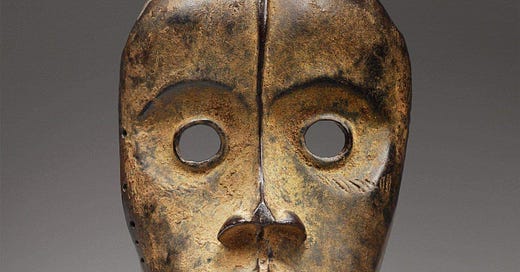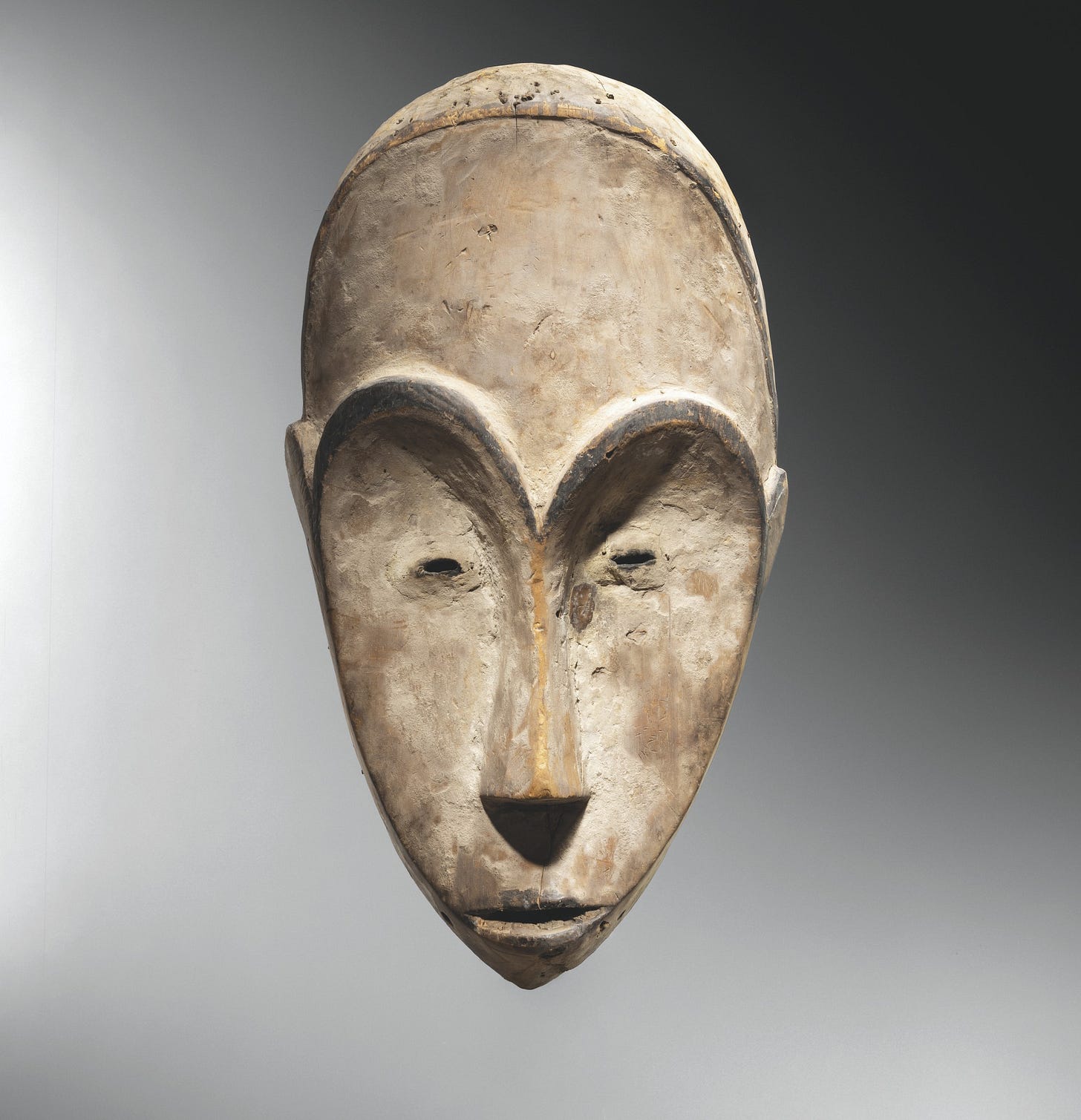Treating people well (whether collaborators, colleagues, employees, family members, etc.) is crucial to build anything greater than ourselves. This is easy to forget when sometimes cruel artists and entrepreneurs successfully bring new products into the world. Stories we tell of accomplished figures with fraught personal and professional relationships (like Steve Jobs, Pablo Picasso, and Kanye West) often cloud the importance of developing strong interpersonal skills.
How can we build productive and fulfilling communities? What personal traits can help entrepreneurs create dynamic team culture? Or help an artist best engage with galleries? I recently sat down with PepsiCo’s Chief of Design Mauro Porcini, a widely admired champion of “human-centered” leadership, and spoke to him about the importance of building teams intentionally. This article explores three traits that are central to this endeavor: resisting cults of personality, embracing asymmetric relationships (not empathy), and gaining objectivity over our selves. Mauro’s insights, drawn both from our conversation and his newest book (The Human Side of Innovation), animate each section alongside evidence from research in psychology and management. In addition, we will examine how traditional West African art and early American photographers successfully cultivated unity in communities.
1. Resisting the cult of personality
The worlds of business and art are full of big personalities who become magnets of attention. These cults of personality are unavoidable to an extent, certain individuals get swarmed with attention whether they like it or not. When it comes to building and supporting community however, research shows that cults can be very damaging. Participants in one noted social psychology study adopted beneficial traits and behaviors when these were associated with a whole group, but not when they were associated a single personality. When participants were primed with information regarding a group (like professors), they proceeded to exhibit positive traits associated with that group (like intelligence), but when primed with an exemplar (or personality) from the same group (like Albert Einstein) they exhibited opposing traits. The researchers believe this may be because people position themselves in competition with a personality (as inferior), while positioning themselves more positively with the group (as aspiring members) (Ferguson 2004). An eccentric genius might have a lot to offer a company, but the quirks that set her apart from her colleagues risk to create friction.
Mauro Porcini emphasizes a human-centered vision of teams in line with this, which emphasizes longevity and collaboration over competition. He warns that team members that act primarily out of self-interest “represent a cancer within a company...that destroys the organization from within” regardless of how talented they are (144). They do not act in the interest of the company and will seek to take advantage of difficult moments rather than help their team overcome them. Worse, they contribute to a culture of distrust in which team members will delegate fewer tasks and take on redundant activities to protect their reputation (like hedging risky initiatives and collecting superficial metrics) (143). In our conversation, Mauro added with gusto that “giving love and receiving love is very important for driving happiness. If you translate that in your working environment, it means surrounding yourself with people who are nice to you, that you love, that you care about. And they care about you as well.”
Studies in management efficiency have similarly shown that framing success in terms of individuals’ accomplishments and shortcomings hurts overall performance. Managers who focus on helping individuals improve their work environment or skillset are better able to improve performance (HBR 2002). Similarly, managers who focus on individuals’ growth potential, rather character traits they cannot change, can set high but realistic expectations that help guide those individuals (HBR 1969).
Art has served to communicate and encourage aspirational behavior throughout history. Displaying virtuosic traits, but resisting a cult of personality is central to many West African traditions of dance and sculpture. Exceptional artistic skill is considered to be bestowed by ancestors, which curbs artists from becoming conceited. The Akan say that a dancer should “never seek applause while dancing” by “disgracefully begging support or praise.” The Dan people also instruct dancers that “when the applause mounts, the smile dies down, and you pay more attention to the footwork” (1974:1-2). Sculpture is also traditionally not meant to direct the viewer’s attention to the artist or any particular person. In line with the research mentioned above, it should instead model emotional serenity and physical power abstractly, to encourage viewers’ aspiration rather than comparison. In one Bassa traditional story, a sculptor who carved the likeness of his wife was punished by elders for not respecting the divine role of masks that demanded this level of abstraction (1974:26).
2. Embracing asymmetric reciprocity, not empathy
The early American photographers Jacob Riis and Lewis Hine encouraged positive social engagement in a different way. They transported their audience into the slums of rapidly industrializing cities with compassionate portraits of families living in terrible conditions and children working dangerous jobs. Importantly, they conveyed the pride and resourcefulness of their subjects in ways that inspired viewers’ respect. The work of these two photographers spurred the nation to action and contributed to a wave of reforms in urban quality of life, access to education, and child labor laws.
We can embrace diversity best when we accept that there are certain things we will never understand about the experiences and ideas of other people. This allows us to extend mutual respect without ignoring difference, like Hine and Riis. Diversity is valuable because it can bring us into contact with people who are more skilled and knowledgeable than us in some ways (and, on the flip side, less skilled and knowledgeable than us in other ways). Diversity thrives in exchanges with people who we respect, but who we also cannot fully understand. As Mauro comments on diversity in professional contexts, “respect allows you to evolve together, opening the doors to new opportunities for both sides, improving matters both individually and collectively, growing and empowering one another" (156).
This sort of exchange is sometimes called “asymmetric reciprocity.” The opposite, “symmetric reciprocity,” is attempting to empathize and put ourselves in someone else’s shoes. This symmetry is necessary to conceptualized socio-political “equalities” like access to resources and rights, but is often unrealistic for interpersonal relationships. One problem with empathy is that we often cannot put ourselves in someone else’s shoes, because our perspective is too different. Thinking that we can can actually threaten mutual respect. Psychological studies have shown that the more deeply we consider a perspective contrary to our own, the more prejudice we develop against those who hold that perspective. This may be because, as we ponder their perspective, we discover more ways in which it conflicts with our values (Catapano 2019). One example of this phenomenon is a 1991 telephone survey of Oregon citizens that asked them to put themselves in the shoes of someone with a disability. In response, most people said they would rather die than live with a physical disability (Young 1997). The able-bodied citizens attempt at empathy backfired, preventing them from actually developing respect for people with disabilities and their choices.
Even when we can put ourselves in someone else’s shoes, studies show that it can be counter-productive. Empathy can increase exhaustion and burnout and lead us to actually “disengage from individuals in distress.” Maintaining a boundary, while extending respect and compassion, can be more helpful to both parties. Not being empathetic also doesn’t make us more prone to physical, verbal, or sexual aggression. Those with autism and Asperger’s, who have low cognitive empathy, “are not particularly violent or exploitative” (Bloom 2017).
3. Getting over ourselves
We are quick to break down other people’s problems and offer advice, but sometimes too proud to approach our own problems with the same resolve. Several studies in social psychology have shown that there is a way around this difficulty: individuals can develop the ability to self-distance, and approach their problems as though they were someone else’s. Researchers find that cultivating this ability can help us recognize the limits of our knowledge, the utility of compromise, and the inevitability of change, as well as take different perspectives into account (Grossmann 2014). This ability is similar to “coachability,” a key trait that venture capitalists look for in entrepreneurs that encompasses our ability to act on good advice and iterate our product and strategy quickly.
Gaining critical distance from our lives and decisions has also been found to improve self-control. One 30-year longitudinal study that followed 1,000 children found that those with high self-control had significantly improved life outcomes regardless intelligence, social class, and family home life (Moffitt 2010). Self-improvement is central how Mauro manages his team at Pepsi-Co, which manages over 350 designers internationally. He encourages team members to continually invest in developing a list of traits that touch on self-distance and includes “avoiding taking themselves too seriously” and becoming “comfortable with discomfort” (102). He began developing these traits early in his career, but eventually realized it was important to “embody them in a super visible way” to help build his team’s culture and to reward “human-centered,” “loving,” and “respectful” behavior.
It is particularly important to continue cultivating self-distance and self-control as we age because increased status can actually erode both. Management research has shown that people are more likely to act selfishly as they rise in power in an organization (HBS 2016). This is a leadership challenge that Mauro broaches head on, and he affirms that “at the end of the day, people feel if other people are communicating just for their ego or they are communicating because they sincerely believe in the power of the messages they are sharing.”
Artwork can help us gain distance from our selves by directing our attention to forces and time-scales that dwarf our immediate lives and humble us. Much traditional West African dance models a state of emotional balance in which the body is engaged in precise and intensive movement, but the face remains serene and composed. The art historian Robert Farris Thompson refers to this as the “striking African custom of dancing ‘hot’ with a ‘cool’ unsmiling face,” explaining that “The body is ...played in two patterns, one stable, the other active” (1974:45). He adds that the dancer’s serene “coolness” “is worn not only in time of stress but also of pleasure” (2011:16). Dancing becomes both a means to practice how to maintain composure in challenging situations and a means to model that ability for an audience.
Creating supportive and productive relationships is difficult. Sustaining them amid challenges and tensions is even harder. Yet we cannot avoid either in our personal and professional lives. Luckily, scientists and scholars can show us what behavior is most beneficial, and culture and community can guide us. The rest is up to us.









